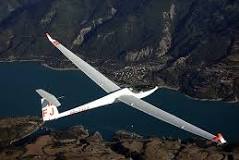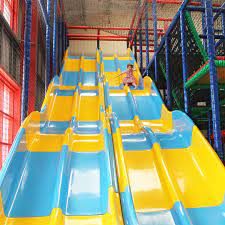
Graceful Gliders: Soaring Through the Skies with Elegance
The Fascinating World of Gliders
Gliders, also known as sailplanes, are a type of aircraft that does not have an engine. Instead, they rely on the forces of lift and gravity to stay aloft. These sleek and graceful machines are a wonder to behold, gliding effortlessly through the sky with the skill of their pilots.
One of the key features of gliders is their ability to soar for long distances without the need for fuel. Pilots use rising air currents, such as thermals and ridge lift, to gain altitude and extend their flights. This makes gliding not only an exhilarating sport but also an environmentally friendly one.
Gliders come in various shapes and sizes, from high-performance racing models to dual-seat trainers for beginners. They are made from lightweight materials such as carbon fibre and fibreglass, allowing them to be agile and responsive in the air.
Gliding has a rich history dating back to the early 20th century when pioneers like Otto Lilienthal and Orville Wright experimented with unpowered flight. Today, gliding has evolved into a popular sport with competitions held around the world.
For those who dream of taking to the skies, learning to fly a glider can be a rewarding experience. It requires skill, precision, and a deep understanding of aerodynamics. Many gliding clubs offer training courses for aspiring pilots, giving them the chance to experience the thrill of soaring like birds.
Whether you’re a seasoned pilot or a curious observer, watching gliders in action is truly mesmerising. The sight of these silent machines dancing through the clouds is a testament to human ingenuity and our enduring fascination with flight.
Next time you look up at the sky and see a glider gracefully circling overhead, take a moment to appreciate the beauty and elegance of these remarkable aircraft.
Exploring the Benefits of Gliding: A Sustainable and Thrilling Aviation Experience
- 1. Environmentally friendly – Gliders do not rely on engines or fuel, making them a sustainable form of aviation.
- 2. Long-distance soaring – Gliders can stay aloft for extended periods by utilizing rising air currents.
- 3. Quiet and peaceful – Gliders operate silently, allowing pilots to enjoy the tranquillity of flight.
- 4. Aerobatic capabilities – Some gliders are designed for aerobatics, offering pilots the thrill of performing manoeuvres in the air.
- 5. Cost-effective – Operating a glider is generally more affordable than flying powered aircraft.
- 6. Skill development – Learning to fly a glider enhances piloting skills and deepens understanding of aerodynamics.
- 7. Community involvement – Gliding clubs provide a supportive community for enthusiasts to share knowledge and experiences.
- 8. Adventure and exploration – Gliders allow pilots to explore new areas and experience the beauty of nature from above.
- 9. Competitive sport – Gliding competitions challenge pilots to demonstrate their skills in precision flying and strategic decision-making.
Challenges of Glider Flying: Weather Dependence, Range Limits, Training Needs, Safety Concerns, and Accessibility Barriers
1. Environmentally friendly – Gliders do not rely on engines or fuel, making them a sustainable form of aviation.
Gliders offer a unique advantage as an environmentally friendly form of aviation due to their lack of reliance on engines or fuel. This sustainable approach not only reduces carbon emissions but also promotes a cleaner and greener way of flying. By harnessing natural air currents to stay aloft, gliders demonstrate a harmonious relationship with the environment, making them a responsible choice for those who seek to minimise their impact on the planet.
2. Long-distance soaring – Gliders can stay aloft for extended periods by utilizing rising air currents.
One of the remarkable advantages of gliders is their ability for long-distance soaring. By harnessing rising air currents such as thermals and ridge lift, gliders can remain airborne for extended periods without the need for fuel. This unique capability allows pilots to explore vast distances and experience the thrill of soaring through the skies with a sense of freedom and adventure.
3. Quiet and peaceful – Gliders operate silently, allowing pilots to enjoy the tranquillity of flight.
One of the standout advantages of gliders is their quiet and peaceful operation. Unlike traditional powered aircraft, gliders soar through the skies silently, creating a serene and tranquil flying experience for pilots. This unique feature allows aviators to immerse themselves in the tranquillity of flight, listening to nothing but the wind whispering past their wings. Flying in a glider offers a rare opportunity to escape the noise and bustle of everyday life, providing a sense of calm and connection with the beauty of the natural world.
4. Aerobatic capabilities – Some gliders are designed for aerobatics, offering pilots the thrill of performing manoeuvres in the air.
One exciting advantage of gliders is their aerobatic capabilities. Certain glider models are specifically designed to perform exhilarating manoeuvres in the air, providing pilots with the thrill of executing aerobatics. These specialised gliders allow pilots to push the limits of precision and skill as they soar through the sky, showcasing the agility and versatility of these remarkable aircraft. The ability to perform aerobatics in a glider adds an extra dimension of excitement and challenge for pilots seeking a more dynamic flying experience.
5. Cost-effective – Operating a glider is generally more affordable than flying powered aircraft.
One significant advantage of gliders is their cost-effectiveness. Operating a glider is typically more affordable than flying powered aircraft. With no need for fuel or engine maintenance, glider pilots can enjoy the thrill of soaring through the skies at a fraction of the cost. This makes gliding an accessible and budget-friendly option for aviation enthusiasts looking to experience the freedom of flight without breaking the bank.
6. Skill development – Learning to fly a glider enhances piloting skills and deepens understanding of aerodynamics.
One significant advantage of gliders is the opportunity they provide for skill development. Learning to fly a glider not only enhances piloting skills but also deepens one’s understanding of aerodynamics. Pilots must master the art of using air currents to gain altitude and extend their flights, requiring precision, focus, and a keen awareness of their surroundings. This hands-on experience in the cockpit fosters a sense of mastery and confidence, making gliding an excellent way to improve one’s aviation skills while gaining a deeper appreciation for the principles of flight.
7. Community involvement – Gliding clubs provide a supportive community for enthusiasts to share knowledge and experiences.
One of the key advantages of gliders is the strong sense of community they foster. Gliding clubs serve as hubs for like-minded enthusiasts to come together, share their passion for flying, and exchange valuable knowledge and experiences. Whether you’re a seasoned pilot or a novice eager to learn, being part of a gliding club offers a supportive environment where members can connect, collaborate, and grow together. This sense of camaraderie not only enhances the overall flying experience but also creates lasting friendships and bonds among individuals who share a love for soaring through the skies.
8. Adventure and exploration – Gliders allow pilots to explore new areas and experience the beauty of nature from above.
One of the exciting advantages of gliders is the opportunity they provide for adventure and exploration. Gliders enable pilots to venture into new territories, allowing them to discover unseen landscapes and witness the beauty of nature from a unique perspective high above the ground. The freedom to soar through the skies with only the sound of the wind as company offers a sense of exhilaration and wonder that is truly unparalleled, making every flight a thrilling journey of exploration and discovery.
9. Competitive sport – Gliding competitions challenge pilots to demonstrate their skills in precision flying and strategic decision-making.
Gliding competitions offer a thrilling platform for pilots to showcase their expertise in precision flying and strategic decision-making. These events push pilots to their limits as they navigate challenging courses, utilize air currents efficiently, and make split-second decisions to outmaneuver their competitors. The competitive nature of gliding competitions not only fosters a sense of camaraderie among pilots but also encourages continuous improvement and innovation in the sport. It is a test of skill, determination, and adaptability that showcases the true artistry of gliding as a competitive sport.
Weather-dependent
One significant drawback of gliders is their heavy reliance on weather conditions. Gliding activities are greatly impacted by factors such as wind speed, cloud cover, and thermal activity, which can determine the safety and feasibility of flights. Pilots must constantly monitor weather forecasts and conditions to ensure a smooth and secure flight experience. The unpredictable nature of weather can often lead to cancellations or delays, limiting the flexibility and spontaneity of gliding excursions.
Limited range
One significant drawback of gliders is their limited range, especially when compared to powered aircraft. Gliders depend solely on natural air currents for lift and propulsion, which means they are restricted in how far they can travel without access to rising air or thermals. This limitation can pose challenges for glider pilots who aim to cover long distances or explore remote areas where suitable air currents may be scarce. The reliance on nature’s elements adds an element of unpredictability to gliding adventures, requiring pilots to carefully plan their routes and adapt to changing weather conditions.
Training requirements
Training requirements for flying a glider can be seen as a significant con for enthusiasts. Obtaining the necessary specialised training and certification demands both time and financial investment. Prospective glider pilots must undergo rigorous instruction to acquire the skills and knowledge needed to safely operate these aircraft. The process can be lengthy and costly, serving as a barrier for those eager to take to the skies in these graceful machines. Despite the challenges, the reward of mastering gliding techniques and experiencing the freedom of soaring through the air often outweighs the initial hurdles of training requirements.
Safety concerns
Safety concerns are a significant con associated with gliders, stemming from the inherent risks posed by their lack of an engine. The absence of a motor means that gliders rely solely on aerodynamic principles to stay airborne, making emergency landings more challenging in certain situations. Pilots must be highly skilled and vigilant to navigate safely through unexpected circumstances, such as sudden changes in weather conditions or mechanical failures. Despite rigorous safety protocols and training requirements, the risk factor associated with gliding remains a valid concern for both pilots and enthusiasts alike.
Accessibility issues
Accessibility can be a significant challenge when it comes to gliding, as the physical demands of piloting a glider may pose limitations for individuals with certain physical disabilities or restrictions. The need for precise control inputs and manoeuvres during flight can make it difficult for some individuals to participate in this exhilarating sport. It is important to consider the accessibility barriers that exist within the world of gliding and work towards creating more inclusive opportunities for all aviation enthusiasts, regardless of their physical abilities.


